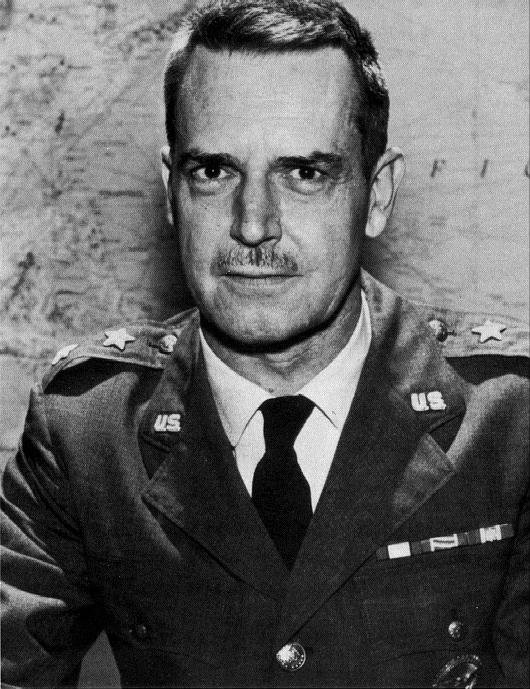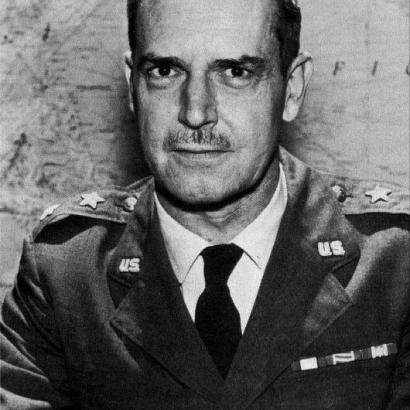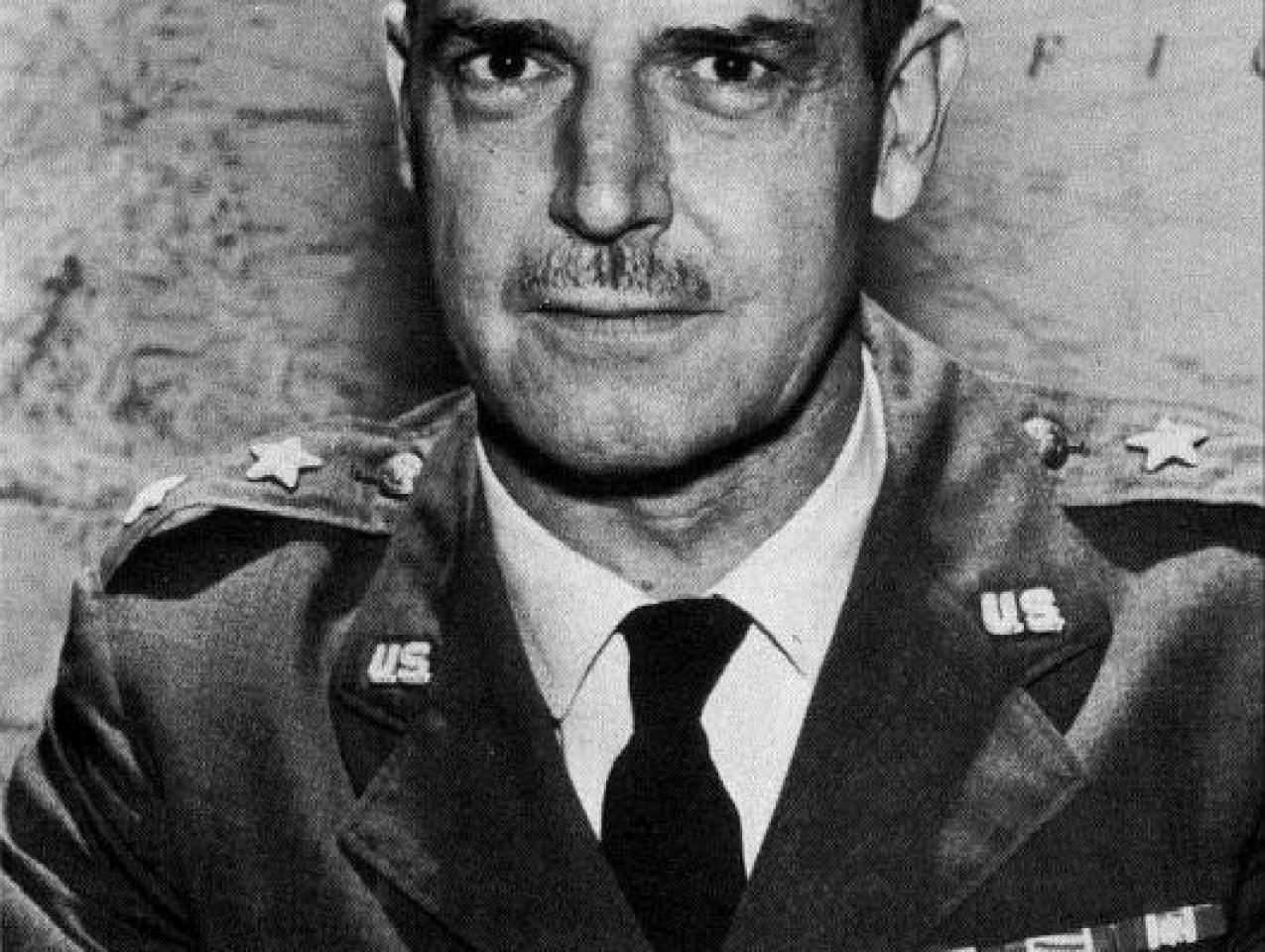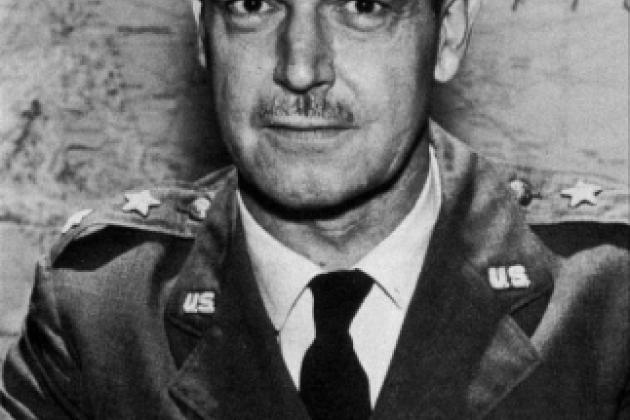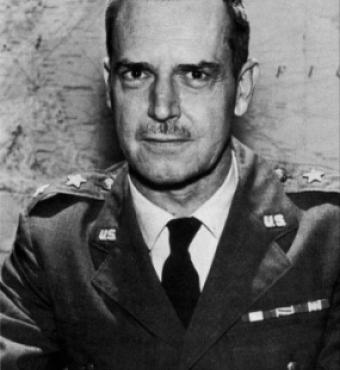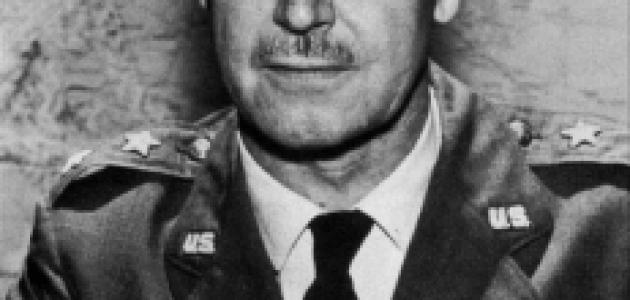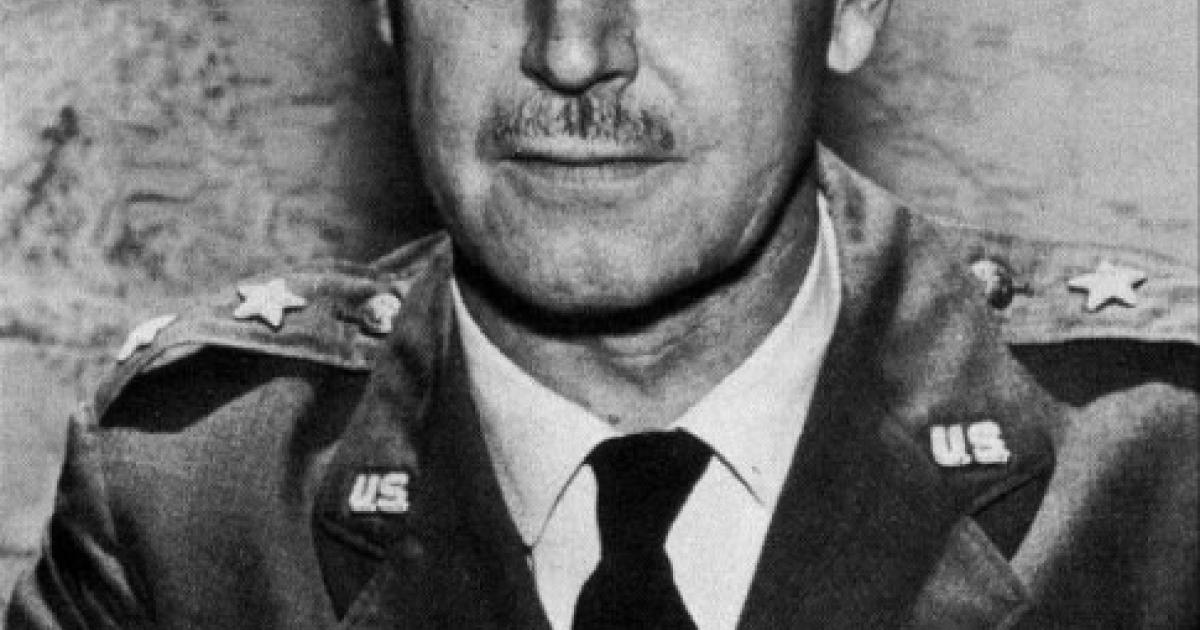Down in the dark, dank, windowless caverns of The Foreign Service Institute—a subterranean parking garage near the Key Bridge in Arlington, Virginia—where we were supposed to be learning an Asian language, the name “Lansdale” was votive, although we weren’t sure why. John F. Kennedy, president a little over a year, had clearly conveyed to us that an unprecedented threat to the nation had risen as Communist forces, inspired, supported, and directed by Moscow and Beijing, were carrying out a new form of warfare in “the Third World”: guerilla insurgencies breaking every tenet of the established laws of war.
Also in the FSI garage were some of President Kennedy’s favored Green Berets, hunched around a sand table blocking the way to the language labs, exchanging tactical schemes. In the larger context of that time, we knew only two things: Something bad was getting worse in South Vietnam, and we, the U.S., didn’t know what to do about it. Theories abounded; none persuaded. It was evident that the end of colonial rule in Southeast Asia was being followed not by a decline in Communist attacks, but by the redirection of the guerilla insurgencies toward destroying the new national governments taking over from the departed European powers.
This challenge appeared to have been successfully met in two nations of the region, by two unique individuals. There was Sir Robert Grainger Ker Thompson of Great Britain who had devised anti-Communist counterinsurgency measures for Tunku Abdul Rahman, the first Prime Minister of the new Federation of Malaya. And there was Colonel Edward Geary Lansdale of the US Air Force, seconded to the CIA, who helped elect and then closely advised Filipino president Ramon Magsaysay to put down the Communist Hukbalahap guerilla war in Luzon. Sir Robert was the epitome of the British empire’s soldier-scholar. Colonel Lansdale inscrutably kept a low profile while at the same time embodying the phrase “a legend in his own time.”
Herodotus, in his History, delineated a nation by the story that its people tell themselves about themselves. In a similar way, Lansdale deliberately created a story of himself in the American narrative. Photographs of Lansdale standing in a hip-shot slouch near, but not too close, to an Asian leader recall “Major Flip Corkin” of the Second World War’s United States Army Air Corps (later to be the USAF). Slender and cool-looking, he projected an intrepid yet easy resolve in the midst of impending chaos, his officer’s cap slightly rumpled in that casual American-at-war way made famous by MacArthur, with his uniform studiously worn in less than regulation style. As the public knew, Lansdale played the harmonica, another aspect of his American folk image, a military version of Huck Finn or Johnny Appleseed. Major Flip Corkin was the cartoon creation of Milton Caniff’s comic strip, “Terry and the Pirates.” As there was a real American officer, Lt. Colonel Phil Cochran, behind the cartoon folk hero Flip Corkin, the real Ed Lansdale played a “Terry and the Pirates” role at that fraught yet romantic moment when the mysterious Orient was transforming itself into modern Asia.
The boundaries between life and art, between facts and literature, are permeable and poorly defended, a good thing overall. In 1955, Graham Greene’s famous and politically influential novel The Quiet American cemented the “Legend of Lansdale” in the public imagination.
In Saigon during the Vietnam War, I worked as a Foreign Service Officer and lived at 47 Phan Than Gian in an old French-style villa, built by the puppet emperor Bao Dai for one of his mistresses, near the Dakao Bridge over the arroyo that marked the city’s edge. I had, of course, read The Quiet American, and knew that in the novel, the Dakao Bridge was where the body of Alden Pyle, shot by the communist Viet Minh, precursors of the Viet Cong, had been dumped to die in the slimy ooze beneath the span.
The Quiet American was the novel of the Vietnam era. Set in 1951, a decade before the United States became seriously involved in the war, the main character Alden Pyle, everyone claimed, must have been modeled on Lansdale, the lone American operative whose disavowable anti-Communist gambits were starting to gain fame in 1951. Scathingly and relentlessly anti-American, the novel seemed prescient to the journalists who were dazzled by it in the 1960s. To them, Greene’s depiction of a fatuously harmful American involvement in Vietnam was as prophetic as had been Edmund Burke’s Reflections on the Revolution in France in foreseeing the terror and military takeover of the French Revolution that were yet to come when Burke wrote. Greene’s other main character, Thomas Fowler, a cynical, seen-everything, soulless Englishman, is the antithesis of what the fresh-faced superficial Pyle represents.
Vietnam was a journalist’s war. It was in the mid-1960s that American reporters suddenly began to “see through” the policy’s deceptive mask and turn against the war. They were a flock of Fowlers, seeing the foul side of everything. Time magazine’s Saigon bureau chief, H. D. S. (David) Greenway compared a journalist’s typewriter to the marshal’s baton that Napoleon said every corporal should carry in his knapsack. With The Quiet American as talisman, a reporter could dream of following the path of Time’s David Halberstam, whose exposés of American misdeeds would make him first in the line of stars featured in the media for opposing their country’s conduct in the world. “Many passages some of us can quote to this day,” Halberstam said about The Quiet American; “It was our Bible.”
Greene claimed his book was mostly reportage. Indeed, it delivers the vivid reality of sights, sounds, and smells of war. The book conveys an eerie sense of place, from “The Continental Shelf,” the terrace at the Continental Palace Hotel in Saigon, where I recall reporters in tailored bush jackets eyed aviator-sunglassed CIA “Air America” pilots sipping their Ban-Me-Ba (“33”) French beer while watching the shoeshine boys and bar girls on the sidewalks that ringed the unwalled platform—to the lonely watch tower on the Saigon-Tayninh road, which Pyle and Fowler, searching for safety, decide to climb as night falls and the Viet Minh come out—a decision that dooms the frightened Vietnamese government soldiers assigned to the tower.
In The Quiet American, art imitates life, and then life imitates art. The novel’s most significant moment is the meeting of Alden Pyle and Thomas Fowler in the Saigon apartment where Fowler lives with Phuong, the girl who Alden had first met, with Fowler, on the Continental Shelf. Later, when the three had gone to the casino, the Grande Monde in Cholon, Alden dances with her, sparking romantic feelings.
The episode is sprinkled with hints that lead the reader to make a connection to Longfellow’s narrative poem about Plymouth colony, “The Courtship of Miles Standish.” John Alden, the main figure in the poem, was the first of the Mayflower’s passengers to set foot on Plymouth Rock, the “original” American. Alden Pyle is the original American idealist, come to a strange land to pacify and civilize it; he is John Alden in Saigon. Thomas Fowler has been to many a war, a hard-eyed and all-too-experienced man. We can envision the “fowling-piece on Miles Standish’s shoulder.” The scene is a remake of Longfellow’s most famous story, but with the roles and characters tellingly reversed.
Pyle (“Call me Alden,” he says to Fowler, who refuses to do so) announces that he is in love with Phuong and that as a younger, more upstanding, and more promising man in every way, he is the husband Phuong deserves. To add to his case, Pyle reminds Fowler that Fowler cannot marry the girl because his wife back in England will not give him a divorce.
Alden speaks no Vietnamese, and his French is rudimentary. So he asks Fowler to speak for him as intermediary and translator. Fowler, outraged, nonetheless accepts the role Alden has put upon him. Alden insists that he himself must say the words in French, “Will you marry me?” But what Alden actually says is “Will you come away avec moi?” She says no.
In Greene’s novel, everything is reversed, out of joint. In Longfellow’s poem, every character is admirable: Priscilla is the virtuous yet witty embodiment of Puritan culture; John Alden is the civilizer and good friend; Miles Standish, the honest, sturdy, simple soldier. In Greene’s portrayal, the encroaching militarism that early New England avoided has emerged in contemporary America. Alden, in his sophomorically idealistic fervor to establish a “Third Force” to save Vietnam from both Communism and colonialism, provides explosives to a Vietnamese General who employs them in a terrorist attack that kills only civilians. Fowler decides that Alden must be stopped and contrives a scenario in which he is murdered by the Viet Minh at the Dakao Bridge.
Greene’s novel condemns the entire modern world as represented by the United States. From his Catholic angle of vision, it all went downhill with the Reformation, which produced the Puritan Revolution in England that, in turn, gave birth to Puritan New England, the source of all that has gone wrong in America and across the world wherever America has gone.
Greene vigorously denied that he modeled Alden Pyle on Lansdale, and chronologies of the novel’s publication and Lansdale’s activities reveal that Greene was telling the truth. Yet, the fictional Alden became inextricably inhabited by the actual Colonel Lansdale. Pyle’s desire to find an Asian leader to advise and a “Third Way” movement between Communism and autocracy are paralleled by Lansdale’s own fixation on General Thé, a “Third Way” candidate, and President Ngo Dien Diem as the Magsaysay-like bulwark against Communism in South Vietnam.
Lansdale read Greene’s The Quiet American and met Joseph Mankiewicz in Saigon where the Hollywood producer had come seeking context for a film based on the novel. In a long letter to Mankiewicz, Lansdale produced details on the political-military situation. As would later be said, “It is obvious that Colonel Lansdale [had] a noticeable effect on the final version of the movie.” It would be a case of literature influencing life and then life—Lansdale’s life—inhabiting the fictional life of Alden Pyle to retell the novel with Lansdale as Alden should have been portrayed by Greene. Lansdale would then recommend the film to Ngo Dinh Diem and to the U.S. Military Assistance Advisory Group (MAAG) in Vietnam as “an excellent change from Mr. Greene’s novel of despair.” The outcome displayed Lansdale’s near-magical persuasiveness as the novel’s bitter anti-Americanism was turned into a pro-American story.
The Lansdale myth was further enhanced in the same year, 1958, that the film was released, by the best-selling novel The Ugly American by Eugene Burdick and William Lederer. The title at first was assumed to be anti-American, but soon was understood as ironic praise for a selfless patriot who served the people of a struggling Asian land in ways that turned the typically heavy-handed American approach into one that could “win hearts and minds.” The novel was an undisguised effort to refute Greene’s The Quiet American, by portraying the heroic and harmonica-playing Colonel Hillandale as a one-man solution to stopping the Communist threat.
“Winning hearts and minds,” a call heard from the very outset of the American role in Vietnam, has been given a renaissance by Max Boot’s new book, The Road Not Taken: Edward G. Lansdale and the American Tragedy in Vietnam. Boot concludes that the twenty-first century’s war on terror can be won by turning for inspiration to “Lansdale’s Cold War era ‘friendly persuasion’: ground troops aren’t the answer. America needs a new generation of advisers who practice patience and build trust with friendly but weak regimes.”
But in retrospect, the slogan “hearts and minds” was a deep-rooted misreading of the challenge presented in Vietnam, going even beyond the claimed moral equivalence of Communism and freedom to proclaim a benevolent contest for the votes of a Third World. This knowingly denied the Cold War’s core significance. The Vietnam War in the South was a terror-using guerrilla insurgency waged by the Soviet- and Mao-supported Viet Cong threat. After repeated U.S. tactical wrongdoing, it was finally won in the early 1970s by giving the South Vietnamese people a secure territory and land reform free from murderous purges. The people themselves did the rest, demonstrating their intense desire not to live under Communist control. Thwarted in their drive to impose Marxist ideology on the South, Hanoi launched a massive conventional military invasion across three international boundaries of the Republic of Vietnam. After the U.S. Congress refused to further supply and support the South, the fall of Saigon to North Vietnam’s T-54 tanks in 1975, and the huge flight of refugees into the sea in hopes of rescue by the U.S. Navy, should have disproved the “hearts and minds” explanation once and for all.
In Boot’s book, Lansdale’s life and modes of operation are told in immense detail, with analysis and insight by the author, but his “hearts and minds” summation is too one-dimensional for such a strange and complex story. It is hard to dismiss the conclusion of the vastly experienced foreign correspondent Stanley Karnow—who watched Lansdale closely in both the Philippines and Vietnam—that Lansdale was simply an ad agency man who, “beneath his homey, gee-whizz veneer,” was “a devious self-promoter who invented ‘psychological warfare’ techniques borrowed from advertising gimmicks” to yield achievements that redounded to his credit.
From the early 1950s, when Lansdale first took up the challenge of counter-insurgency, to well into the twenty-first century, a large body of knowledge and intellectual debate has accumulated around the task of defeating radical uprisings. This may be understood by reference to Carl von Clausewitz’s classic On War, published in 1832, and its concept of “The Center of Gravity,” that area of the enemy’s fundamental vulnerability that, if exploited, would cause his collapse. Clausewitz proclaimed there were four such crucial vulnerabilities: the enemy’s territory, capital city, army, and alliances. During the American Civil War, the North’s quandary was which one of these vulnerabilities should be the main thrust of its strategy against the Confederacy. The problem presented by radical guerilla terrorist warfare is that Al-Qaeda and the like do not possess any of these Center of Gravity vulnerabilities. When the Islamist movement calling itself the Islamic State and Caliphate (ISIS) adopted Clausewitz’s “Center of Gravity” doctrine and seized territory with something like an army, they were defeated, having abandoned the advantages of insurgency.
What then is the Center of Gravity of an insurgent enemy? The experiences drawn from the many firefights, terrorist acts, and political struggles over the last half of the twentieth and now in the twenty-first century leads to the conclusion that Sir Robert Thompson’s doctrines employed in ending the Malayan Emergency have been the most effective. Something like “winning hearts and minds” is included in Sir Robert’s formula, but far more than that concept is involved. Thompson’s main points include at a minimum:
—provide security for the people; i.e. clear, hold, and build;
—produce political-economic change for the people, not the elite, i.e. land reform;
—possess and have the will to use main, major force against enemy concentrations of power;
—understand and respect the culture of the people; provide an ethical-moral example;
—don't set deadlines; convince the people that you will serve their aspirations for a better life for as long as it takes.
Much on this roster was put into effect in South Vietnam 1969–1972 by the “One War” team of General Creighton Abrams and Ambassador Ellsworth Bunker, a new tactical approach that defeated the Viet Cong in those years, leaving Hanoi with no choice but to launch massive conventional military attacks across South Vietnam’s international borders in 1972 and 1975.
In contrast, Colonel Lansdale’s prescriptions—searching for a leader to instruct; forming a “Third Force;” and conveying a kindly understanding of the needs of a people facing a Communist takeover—are examples of what not to do. Still, Boot has nonetheless painted an unforgettable portrait of a unique American character, and that’s enough.







